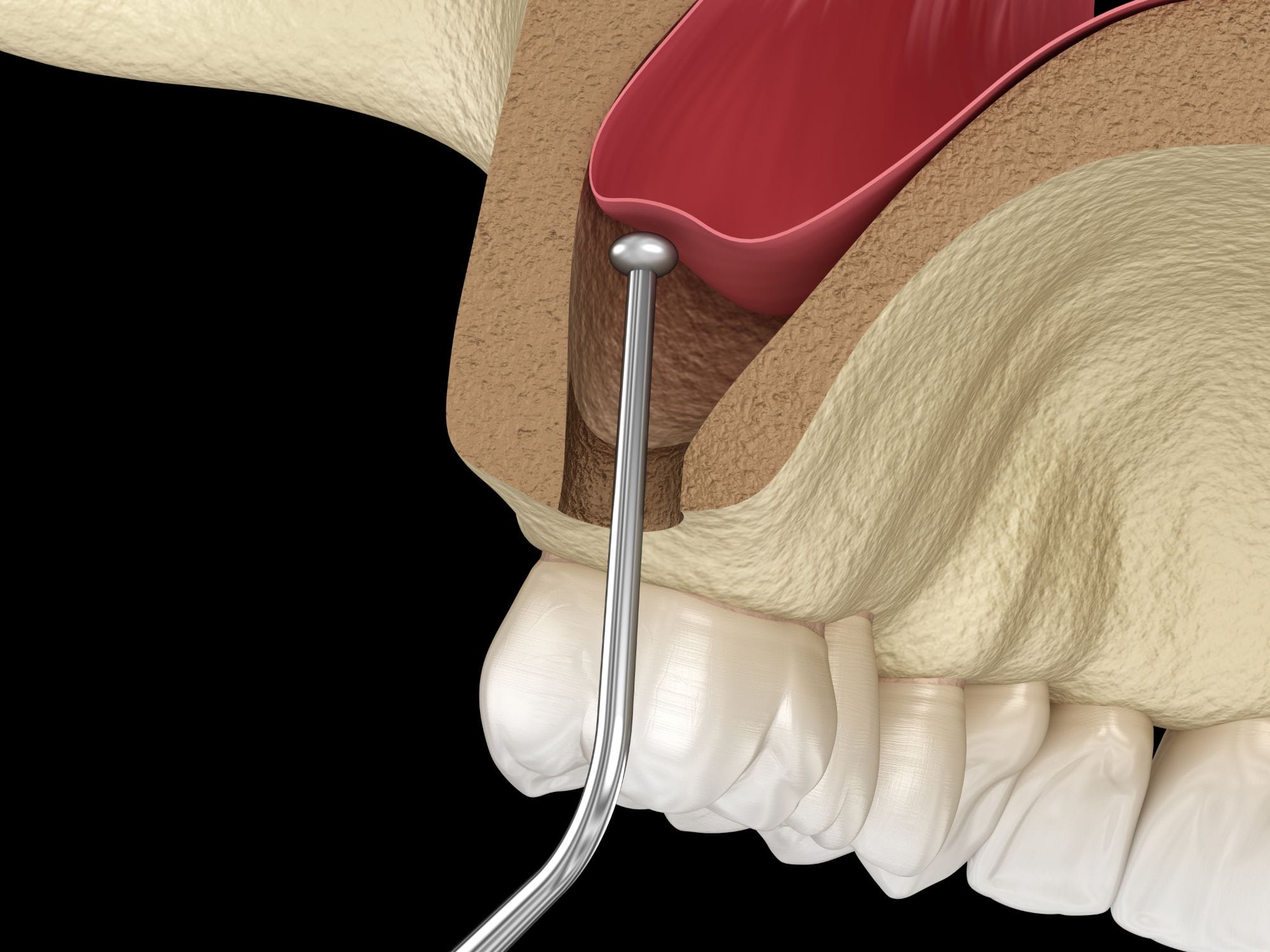One of the keys to a successful dental implant procedure is having enough healthy and natural bone to support the implant. In some cases, there may not be enough natural bone due to gum disease, trauma to the face or jaw, spaces left empty after teeth are removed, or other previous procedures where efforts were not made to restore a patient’s natural bone. When this is the case, bone can be augmented through procedures such as bone grafts, ridge expansions, sinus augmentation.

The Basics of Sinus Augmentation
Sinus augmentation, also sometimes referred to as a sinus lift or sinus elevation, is a procedure that is part of a larger overall effort to restore missing upper back teeth in a patient’s mouth.
When back teeth are missing in the upper jaw, the sinus cavity can become larger as bone deteriorates over time. To combat this, Dr. Ting adds bone to the sinus floor so that one or more implants can be placed. The procedure will not affect the sinus or affect a person’s speech in any way.
Several techniques can be used to raise the sinus and allow for new bone to form. In one common technique, an incision is made to expose the bone and then a small hole is cut into the bone to connect to the sinus floor. The sinus floor is filled with bone graft material.
The good news is that this procedure will provide more bone to support the implant.
After a Sinus Augmentation
After the augmentation is completed, the bone is given time to form over a period of 6 to 12 months. When the bone is sufficiently melded to a patient’s jaw, Dr. Ting is then able to place one or more dental implants with a higher chance of success. With sturdy and strong bones, an implant will be able to function like healthy and normal teeth for years to come.
Think Oral Implants and Periodontics serves patients in Paoli, Malvern, Berwyn, and surrounding Pennsylvania communities.